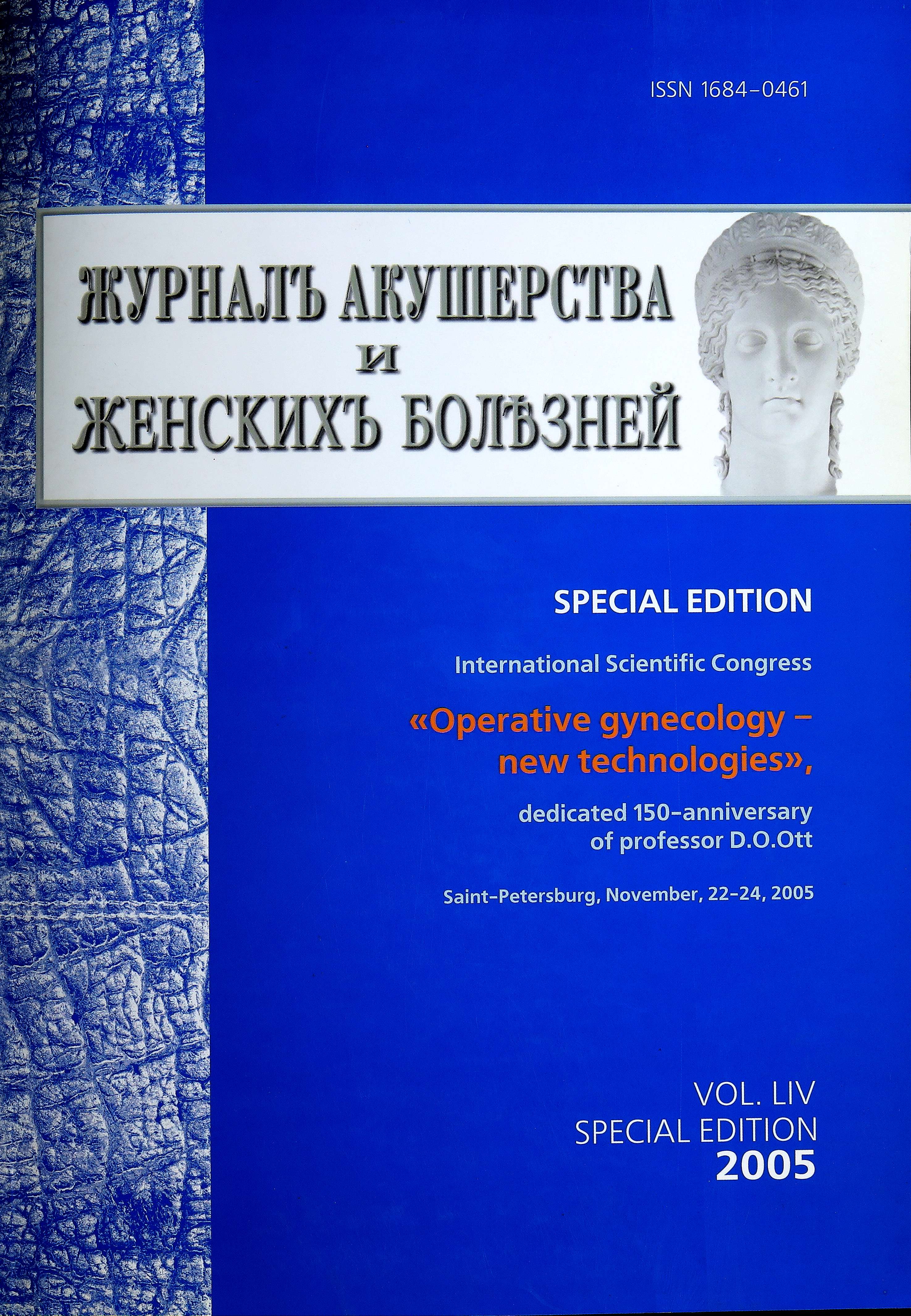The experience of repeated laparoscopic operations in patients with malignant ovarian tumors
- Authors: Novikova Е.G.1, Antipov V.A.1, Shevchuk А.S.1
-
Affiliations:
- P.A. Hertzen Research Oncological Institute
- Issue: Vol 54, No 5S (2005)
- Pages: 85-86
- Section: Reviews
- Submitted: 15.11.2005
- Accepted: 11.11.2021
- Published: 15.11.2005
- URL: https://journals.eco-vector.com/jowd/article/view/87544
- DOI: https://doi.org/10.17816/JOWD87544
- ID: 87544
Cite item
Abstract
Aim: to evaluate possibility and effectiveness of laparoscopic surgery in patients with early stage ovarian malignancies after non-radical surgical treatment of ovarian malignancies.
Full Text
Aim: to evaluate possibility and effectiveness of laparoscopic surgery in patients with early stage ovarian malignancies after non-radical surgical treatment of ovarian malignancies.
Material and methods. We performed 52 repeated laparoscopic operations in patients at the age of 16 to 65 years, who had had non-radical surgical treatment of I stage malignant ovarian tumors. Patients underwent non-radical operations in gynecological clinics of general profile concerning first diagnosed ovarian tumors and cysts. In most cases the only performed procedure was unilateral removement of adnexal mass and ovarian malignancy was revealed only after postoperational histological examination of the removed ovary. Repeated laparoscopic operations, the purpose of which was adequate staging of tumor process and observance of treatment radicalism, were performed within 12 - 280 days after non-radical operations. During repeated laparoscopic operations ontological principles were kept: careful inspection of abdominal cavity, intraoperational cytological examination of peritoneal fluid, washings and peritoneal biopsies, intraoperational histological examination of removed ovaries, infracolic omentectomy. In all cases laparoscopic ultrasound examination of pelvic and paraaortic lymph nodes was performed. For evacuation of specimens out of abdominal cavity we used special containers.
Results. The average duration of surgery was 164 min. Conversions was made in 9 cases: 4 - in relation with tumor dissemination, 3 - concerning widespread adhesions, 2 - regarding intraoperational complications (bleeding from left gastroepiploic artery). Postoperational complications were observed in 3 patients and did not required surgical correction. The patients were discharged from the clinic within 4-5 days after surgery. The usage of laparoscopic surgery has made it possible to reduce rehabilitation period more than in two times in comparison with the similar indexes in case of laparotomy. Restaging was performed in 10 (19,7%) cases.
Conclusions. The usage of laparoscopic surgery in the purpose of restaging in patients who underwent non-radical operations in relation with malignant ovarian tumors let to increase the quality of patients’ lives without any prejudice to oncological radicalism.
About the authors
Е. G. Novikova
P.A. Hertzen Research Oncological Institute
Author for correspondence.
Email: info@eco-vector.com
Russian Federation, Moscow
V. A. Antipov
P.A. Hertzen Research Oncological Institute
Email: info@eco-vector.com
Russian Federation, Moscow
А. S. Shevchuk
P.A. Hertzen Research Oncological Institute
Email: info@eco-vector.com
Russian Federation, Moscow
References
Supplementary files







